The magnificent St Fin Barre’s Cathedral in Cork is arguably the city’s most iconic building.
Often referred to as ‘Cork Cathedral’ or ‘St Finbarre’s’, this is one of the must-visit of the many Cork attractions.
From the impressive exterior to what you find within and the atmospheric sense of the long history of faith and spirituality, it’s a wonderful place to spend an afternoon.
In the guide below, you’ll discover everything you need to know about visiting the incredible St Fin Barre’s Cathedral In Cork.
Some quick need-to-knows about St Fin Barre’s Cathedral In Cork
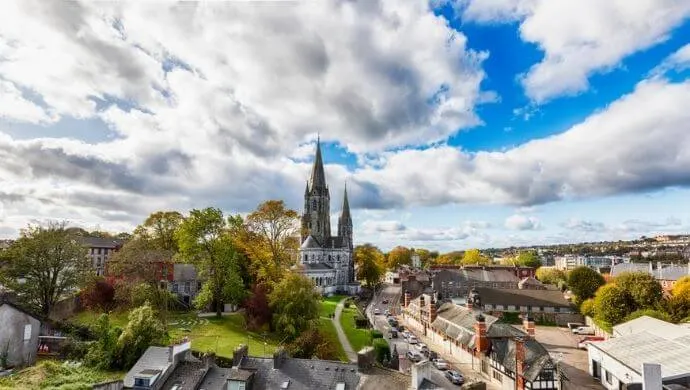
Photo by ariadna de raadt (Shutterstock)
Interestingly enough, the historic St Fin Barre’s Cathedral in Cork celebrated its 150th year in 2020. What a year to turn 150…
While a visit to the Cork Cathedral is pretty straightforward, there are several need-to-knows that’ll make your visit to St Fin Barre’s that bit more enjoyable.
1. Location
You’ll find St Finbarr’s Cathedral located on the south side of the River Lee on Bishop Street, a stone’s throw from many of the best things to do in Cork City.
2. Opening hours
The cathedral is closed to visitors on Sundays as you might expect, but from Mondays to Saturdays, you can visit between 10am and 1pm, and 2pm to 5.30pm.
On bank holidays, the cathedral is open 10am to 5.30pm. The last admission is 30 minutes before closing time. See the most up-to-date opening hours here.
3. Admission/prices
There is an admission fee to help with the building’s maintenance. Adults pay €6, while seniors and students are charged €5. Children under 16 are free of charge.
A history of the Cork Cathedral

Photo left: SnowstarPhoto. Photo right: Irenestev (Shutterstock)
There’s an interesting history behind both St Finbarre’s Cathedral in Cork and St Finbarre himself.
The below history of the Cork Cathedral is intended to give you a taste of the story behind the building and St Finbarre – you’ll discover the rest when you walk through its doors.
Early days
The 19th century building is on a site that is thought to have been in Christian use since the 7th century when there was a monastery there.
The original building survived until the 1100s when it either fell into disuse or the Norman conquerors of the British Isles destroyed it.
In the 16th century around the time of the Protestant reformation, the cathedral on site became part of the Church of Ireland. A new cathedral was built in the 1730s—by all accounts a not terribly impressive building.
The new building
In the mid-19th century, the Anglican Church demolished the old building. Work begun on the new cathedral in 1863—the first major project for the architect William Burges, who designed most of the cathedral’s exterior, interior, sculpture, mosaics and stained glass. The cathedral was consecrated in 1870.
Who was Finbarre?
St Finbarre was a bishop of Cork and is the patron saint of the city. He lived in the late 6th early 7th century and travelled in pilgrimage to Rome with other monks.
When he returned home after his education, he lived for some time at Gougane Barra, one of the most beautiful places to visit in West Cork.
In the latter part of his life, he lived in what later became the city of Cork, surrounded by monks and students. The place gained a reputation for learning – the phrase Ionad Bairre Sgoil na Mumhan translates to “Where Finbarr taught let Munster learn” and is the motto of today’s University College Cork.
St Finbarre is thought to have died in 623 and was buried in the cemetery at his church in Cork. His feast day is 25 September, and the Scottish island of Barra is supposed to be named after him.
Things to keep an eye out for at Saint Fin Barre’s Cathedral

Photo left: Irenestev. Photo right: KateShort (Shutterstock)
The Cork Cathedral is mainly built from local stone sourced from nearby Little Island and Fermoy. Study the outside carefully before entering.
There are three spires – two on the west front and the other where the transept crosses the nave. Thomas Nicholls, the sculptor, modeled many of the gargoyles and other external sculptures.
At the entrance to the cathedral, you’ll see the biblical figures and a tympanum (a semi-circular or triangular decorative wall surface over an entrance, door or window) that shows the resurrection scene.
1. The cannonball
To the surprise of many visitors to the cathedral, there’s a cannonball suspended from a chain that hangs just beyond the Dean’s chapel. Not your usual cathedral décor, but the cannonball has a long history…
During the siege of Cork, which took place in 1690 shortly after the Battle of Boyne when James II attempted to retake the English throne from King William III, the Duke of Marlborough took the city from Jacobite sympathisers.
The 24-pound cannonball was fired from Elizabeth Fort on Barrack Street. It sat in the steeple of the old cathedral up until the old building was demolished, so that the new cathedral could take its place.
2. The very old pipe organ
The organ in the cathedral was built by William Hill & Sons, and consists of three manuals, more than 4,500 pipes and 40 stops, and it was in place when the cathedral held its grand opening on 30 November 1870.
The maintenance of the organ is one of the most expensive parts of the cathedral’s upkeep, and it has been overhauled several times – in 1889, 1906, 1965-66, and 2010. The final overhaul cost €1.2m and took three years to complete.
3. The sculptures
The cathedral has more than 1,200 sculptures, with around a third of them in the interior. There are 32 gargoyles on the outside, each with a different animal head. The sculpture work was overseen by William Burges, who worked closely with Thomas Nicholls. Each figure was constructed first in plaster, with Nicholls working alongside local stonemasons to finish them off.
Burges had wanted some of his sculptures and the figures in his stained glass to be nude, but the Protestant committee members of the time objected, and he was forced to come up with more modest designs that presented figures partially or fully clothed.
4. The impressive exterior
Before you enter the cathedral, take time to walk around the exterior. It’s breath-taking. William Burges designed it in the Gothic Revival style, reusing elements of some of the unsuccessful designs he had come up with for other cathedral designing competitions.
Built mainly from local limestone, the interior is made from stone that came from Bath and the red marble from nearby Little Island.
The building’s three spires each support a Celtic Cross in reference to Ireland’s patron saint, Saint Patrick. Technically, they were difficult to build and expensive to fund.
Things to do near Saint Fin Barre’s Cathedral
One of the beauties of Saint Fin Barre’s Cathedral is that it’s a short spin away from a clatter of other attractions, both man-made and natural.
Below, you’ll find a handful of things to see and do a stone’s throw from Saint Fin Barre’s Cathedral (plus places to eat and where to grab a post-adventure pint!).
1. The English Market

Photos via the English Market on Facebook
Food, food, glorious food… you’ll find plenty of delicious delights at the English Market. Seafood producers rub shoulders with artisan bakers, craft cheese makers and more. Bring your own bags and a big appetite.
2. Blackrock Castle
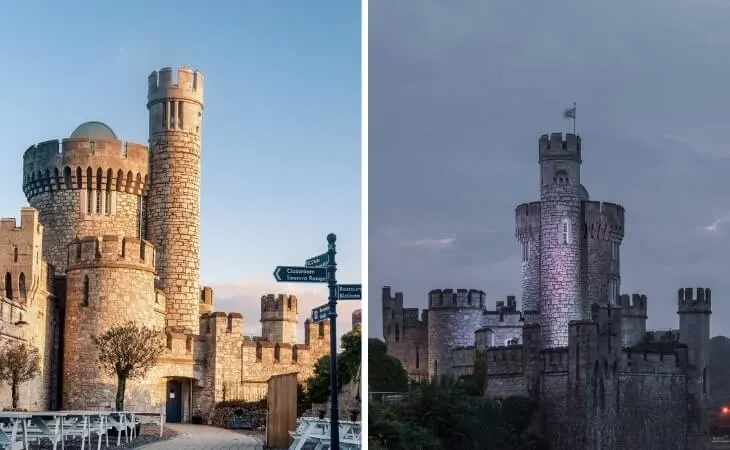
Photos via Shutterstock
More fabulous history, the Blackrock Castle was originally built to protect the good citizens from pirates or potential invaders in the late 16th century (around the time when a Spanish invasion of the British Isles was a real threat). Nowadays, there’s an observatory on site too. It’s also home to one of the best places for brunch in Cork (the Castle Cafe).
3. Elizabeth Fort
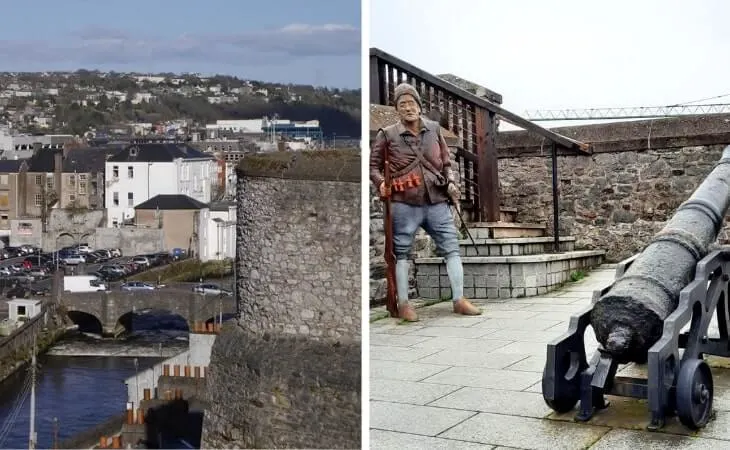
Photo via Elizabeth Fort on Instagram
Built in the early 17th century and named for, guess who, but Queen Elizabeth 1, Elizabeth Fort ties in with Saint Fin Barre’s Cathedral via the cannonball suspended within the cathedral.
4. The Butter Museum
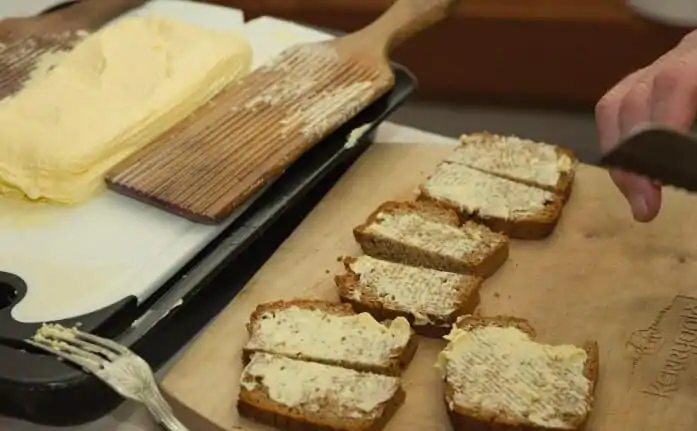
Photo via Cork Butter Museum
How can there be a whole museum devoted to butter? A good question, but when you realise the central role butter and dairy products have played in Ireland’s social and economic history, the Butter Museum makes a lot of sense.
5. Pubs and restaurants

Photos via Pigalle Bar & Kitchen on Facebook
There’s no end to the number of places to eat (see our Cork restaurants guide) and pubs to nurse a pint or 3 in (see our Cork pubs guide) the Cork City. From fine dining and pubs that date back hundreds of years, there’s loads of spots to whittle away an evening in style.
6. Cork Gaol
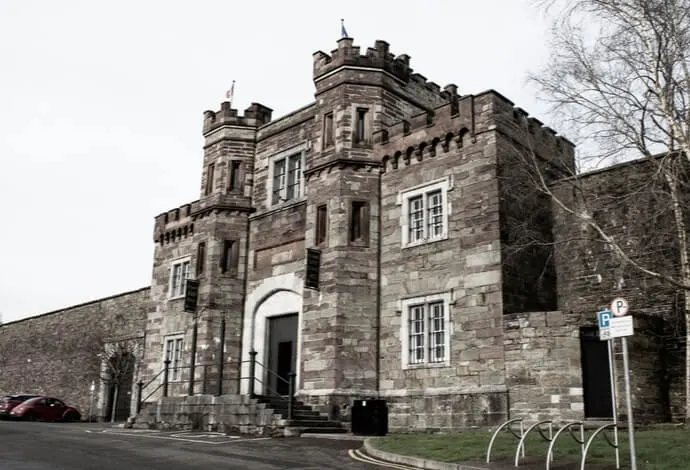
Photo by Corey Macri (shutterstock)
Another piece of 19th century history close to the cathedral is the Cork City Gaol. The prison was used for male and female prisoners in the early part of the 19th century, becoming a gaol for women only later on. Now a museum, the attraction offers a key glimpse into 19th century justice.
FAQs about St Fin Barre’s Cathedral
We’ve had a lot of questions over the years asking about everything from whether the Cork Cathedral is worth visiting to what to see nearby.
In the section below, we’ve popped in the most FAQs that we’ve received. If you have a question that we haven’t tackled, ask away in the comments section below.
What is there to do at St Fin Barre’s Cathedral?
There’s plenty to see at the Cork Cathedral, such as – the impressive exterior, the sculptures, the very old pipe organ, the cannonball and the gorgeous interior.
Is the Cork Cathedral worth visiting?
Yes – the building itself is beautiful and it has an plethora of interesting features to check out and stories to heard.
What is there to do near St Fin Barre’s Cathedral?
There’s lots to see and do near St Fin Barre’s Cathedral in Cork. You’ve everything from Blackrock Castle and the Butter Museum to many of the city’s top attractions a stone’s throw away.
